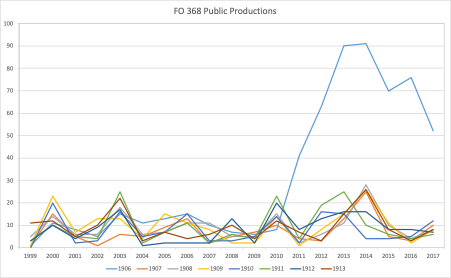If you are interested in archives and the way historians operate within them check out my new article in Diplomacy & Statecraft 1/ https://doi.org/10.1080/09592296.2020.1782672">https://doi.org/10.1080/0...
In it I seek to address 2 vital questions in any archival research, using the example of the early C20 British Foreign Office 2/
1st Question – what survives? Virtually no archive is complete, but what % of the original collection remains for historians to use? 3/
For FO correspondence the % is really high – far higher than that of other areas of the British govt and this has a major impact on the history we can write 4/
2nd Question – what can historians find in the archive? It’s no good a document surviving if you can’t find it. 5/
In the FO archive less than 50% of documents are indexed in the original index which is the primary means of finding material in the archive. This leaves vast swathes of the collection hidden from historians 6/
Finally, I use data on the documents historians order to look at the difference modern cataloguing makes their behaviour in archives 7/
This shows the number of times documents were ordered. Can you guess which year of correspondence was catalogued by TNA and when? 8/
This data raises serious questions about how historians operate in archives and the impact of external factors like catalogues on our research 9/
All this and more is in the article, so if archives and/or methodology is your bag then check it out. 10/

 Read on Twitter
Read on Twitter


